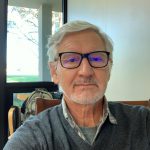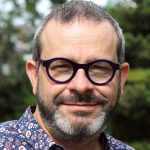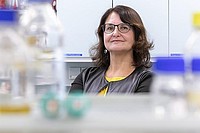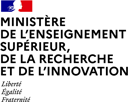QUALITY SEEDS AND TRANSPLANTS FOR HORTICULTURAL CROPS AND RESTORATIVE SPECIES



Michela Bertaud, France ; Birte Boelt, Danemark ; Kent Bradford, USA ; Julia Buitink, France ; Samuel Contreras, Chile ; Ian Dodd, UK ; Athanasios Koukounaras, Greece ; Craig McGill, New Zealand ; Warley Marcos Nascimento, Brazil ; Yuksel Tüzel, Turkey ; Sognigbé N'Danikou, Tanzania
The quality of seeds and transplants is of paramount importance to address the challenges brought by the effects of climate changes, reduction of pesticides and environmental restoration of lands. This symposium will provide new knowledge from academia and industry to identify knowledge gaps that need to be addressed to produce, deliver and market seeds and transplants for conventional, organic and field/controlled conditions and to restore environments, in temperate and tropical contexts.
The following topics will be developed during the symposium:
· Tuning plant resilience to climate change. Seeds have evolved to be highly efficient environmental sensors that respond not only to their prevailing environment, but also their environmental history, to regulate germination and seedling establishment. What are the mechanisms governing seed and transplant quality traits in stressful environments? What can we learn from wild and model species? Has this knowledge been transferred to industry? To what extent do grafted transplants contribute to resilience?
· Transitioning towards organic horticulture. Compared with the growth of the overall organic sector, organic seeds and transplants are still an underdeveloped area. What are the challenges and opportunities for the production of organic seeds and transplants? How can the knowledge gained from conventional seed/transplant production lead to technology transfer for the organic seed and transplant industry? What are the innovations to overcome the current restrictions? Are appropriate certification schemes in place to ensure quality?
· Environmental and seed conservation. A specialized industry provides native seeds to restore lands devastated by wildfires, natural disasters and invasive weeds. What are the needs for this industry? What are the technological hurdles and knowledge gaps limiting seedling establishment of orphan crops, cover crops and wild species? How can seed collection and storage be optimized for an efficient conservation program? How to overcome desiccation sensitivity and poor longevity in recalcitrant and intermediate seeds?
· Seed and transplant innovation systems for horticultural sustainability. How can precision seed conditioning, priming and planting, digital imaging, transplant and nursery technologies (including grafting), automation and new phenotyping techniques, together with modelling and “omics” will improve horticultural sustainability? How seed and transplant production systems can be optimized from technological and regulatory points of view to meet the challenges of horticulture in temperate and tropical countries?
· Seeds and transplants are not alone. Many microbes are being discovered on and within seeds and transplants. What are they? What are their functions? Do they influence seed quality and transplant traits or conversely do seed/transplant quality influence the microbial communities? How can microbiomes contribute to securing healthy seeds and transplants?
If you need help for your abstract please contact :
daniel.leskovar@agnet.tamu.edu
olivier.leprince@agrocampus-ouest.fr
HOW TO PREPARE ABSTRACTS AND PAPERS SUBMIT YOUR ABSTRACTS







